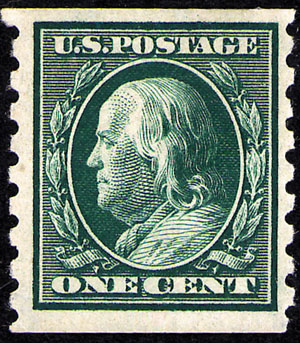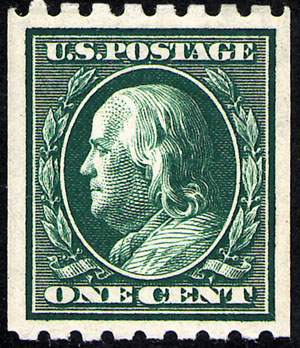back to
Stamp Types and Perforations
 |
 |
| Vertical Perforated Coil | Horizontal Perforated Coil |
Coil stamps - These types of postage stamps were originally created for use in vending and automatic stamp affixing machines. They come in long rolled strips with straight edges on two opposite sides and perforated edges on the other two sides. When coil stamps first appeared for use in vending and stamp-affixing machines, many collectors did not consider them to be separate issues and ignored them. As a result, some are quite rare today.
Imperforate Issues - The early U.S. issues from 1847 to 1856 were issued without perforations. For half a century all stamps were perforated to make separation easy. To accomodate the needs for makers of stamp vending and mass-mail affixing machines the government released imperforate sheets starting in 1906.
Perforations
Before 1857, U.S. stamps were issued without perforations, requiring postal clerks to use scissors to separate stamps from one another, a slow and tedious process. When England's Henry Archer invented a perforation machine that punched holes between stamps on a sheet, stamps could be quickly and easily separated.
The measurement of perforations, for example perf 10 or perf 12, is based on the number perforations in a 2 centimeter distance. A perforation gauge provides a simple, easy to use template on which to measure perforations. The stamp is placed on top of this gauge and moved until the stamp's perforations match that shown on the gauge.

